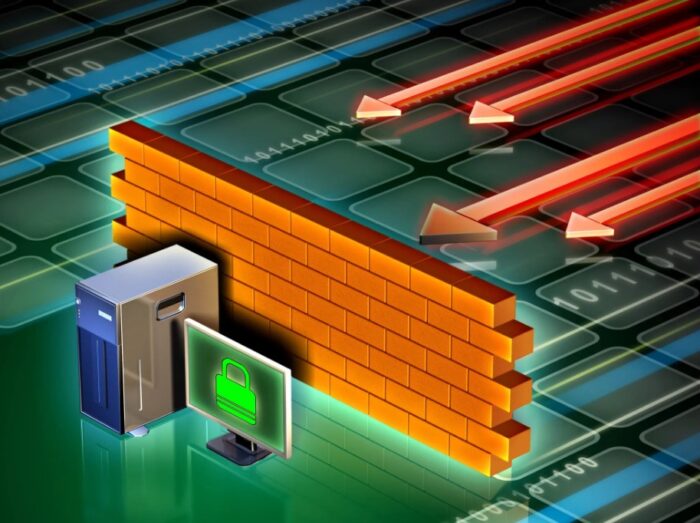
A firewall is a system designed to prevent unauthorized access to or from a private network. Firewalls can be implemented in both hardware and software, or a combination of both.
In this article, we will discuss some common pitfalls and best practices for using a firewall to ensure maximum protection.
Firewalls are often categorized as either network firewalls or host-based firewalls. Network firewalls filter traffic between two or more networks and run on network hardware. Host-based firewalls provide security for individual devices connected to the internet, such as laptops and desktops, and run on those devices themselves.

Firewall technology provides an essential layer of security for the modern internet user by shielding their data from malicious attackers who may attempt to gain access to networks through unsecured portals such as email attachments, downloads, web browsing activities, and other platforms.
A firewall works by examining all incoming traffic (inbound) and outgoing traffic (outbound) that passes through it, then deciding whether it should be allowed based on its predetermined ruleset (also called ACLs). This set of rules is designed to protect your computer systems from unauthorized access while still allowing legitimate users legitimate access when required.
Sophos Firewall is a powerful, reliable, and secure firewall solution for businesses of all sizes. It is designed to protect your network from external threats and provides a robust set of features to keep your network safe.
Types of Firewalls

Firewalls are a type of network security device that can be used to protect computers, networks, and other devices from malicious online threats. Firewalls are an essential part of any IT infrastructure as they provide an additional layer of protection against malicious attacks such as viruses, ransomware, and other forms of cyber attacks.
There are many different types of firewalls available on the market today, each offering various levels of protection for a given organization or individual. The most common types are:
1. Network Firewalls
Network firewalls offer the highest level of protection from external threats by controlling traffic between two or more networks. These firewalls examine all incoming and outgoing traffic for malicious content before allowing access to the network. They can also be used to create virtual private networks (VPNs) which encrypt data while traveling between two points on a network.
2. Application-Level Firewall
Application-level firewalls provide an additional layer of security by examining each application running on the system for potential vulnerabilities or attacks. This type is often used in web servers where every request must pass through multiple layers before being allowed into the system.
Common Pitfalls and Best Practices for Using a Firewall

A firewall is an essential tool for maintaining the security of your computer or network. It protects your system from outside intruders by blocking malicious traffic and limiting access to certain parts of your system. However, if not set up properly, a firewall can leave you vulnerable to attacks.
One of the most common mistakes when it comes to firewalls is not setting them up correctly. Firewalls should be configured with specific rules that specify which traffic is allowed through and which should be blocked. Many users are unaware that they need to set these rules for their firewalls to work properly. Additionally, many users forget to keep their firewalls updated with the latest patches and security updates which can leave them vulnerable to attack if attackers take advantage of outdated software vulnerabilities.
Another common mistake with firewalls is failing to use two-factor authentication (2FA). 2FA adds an extra layer of security by requiring two separate forms of authentication before allowing access into a network or system – typically something you know (such as a password) and something you have (such as a physical token).
Benefits of Firewalls
When it comes to protecting your computer from malicious attacks and threats, having a firewall is essential. A firewall is a security measure that stops unauthorized access to or from private networks. It monitors incoming and outgoing network traffic and allows or blocks data packets based on predefined rules. Firewalls can be hardware-based, software-based, or a combination of both.
The benefits of using firewalls are numerous. The first benefit is that they provide an extra layer of protection for your system by preventing malware, viruses, worms, Trojans, and other malicious programs from entering your system without permission. Additionally, firewalls can help protect against hackers attempting to gain access to sensitive information stored on the computer such as confidential passwords and credit card numbers. Firewalls also help protect against denial-of-service (DDoS) attacks which are designed to take down entire networks by flooding them with traffic requests.
Another benefit of firewalls is that they can be used to control the type of content accessed on the internet by setting filters for different types of websites such as those with adult content or gambling sites.
Risks and Challenges Associated with Firewalls

Firewalls are an important part of any organization’s security architecture, and they can be incredibly effective in keeping out malicious traffic. However, there are also many risks and challenges associated with firewalls that need to be considered before implementing one.
One of the most common risks associated with firewalls is that they can block legitimate traffic. Firewall rules are designed to block known threats, but they can also inadvertently block legitimate traffic as well. Organizations should carefully review their firewall rules to ensure that only the necessary traffic is being blocked while allowing essential communications to pass through unhindered.
Another risk associated with firewalls is that attackers may still find ways to bypass them by exploiting weaknesses in the underlying system or application layer architecture. Firewall rules should be regularly updated and tested against known attack patterns to ensure maximum protection against malicious activities. Additionally, organizations should also consider employing additional measures such as intrusion detection systems (IDS) or intrusion prevention systems (IPS).
The challenge of managing a firewall properly is another major issue for organizations looking to implement one. Firewall configurations need regular maintenance and updates for them to remain effective over time.
Conclusion
In conclusion, a network firewall is an essential component of any secure computing environment. It is designed to prevent malicious activity from entering and leaving the network while allowing legitimate traffic to pass through. This provides an added layer of security that can help protect against data loss, cybercrime, and other threats. Additionally, network firewalls can be configured to allow access only from certain IP addresses or specific users with appropriate permissions. With these features in place, a network firewall helps ensure that your systems remain safe and secure for all users.








